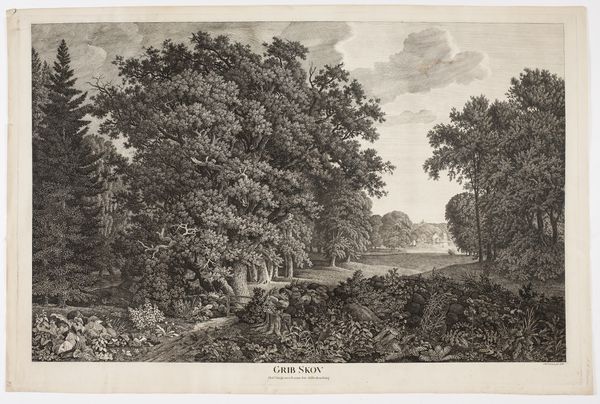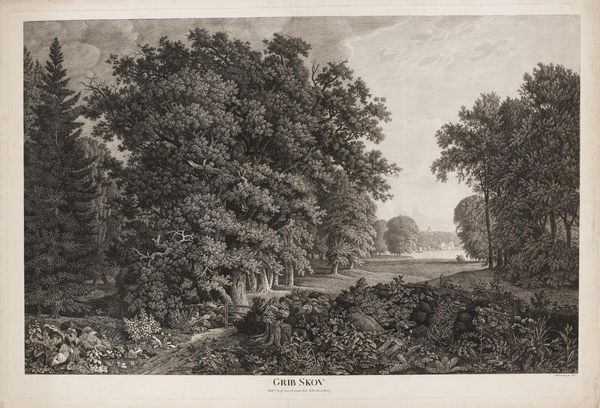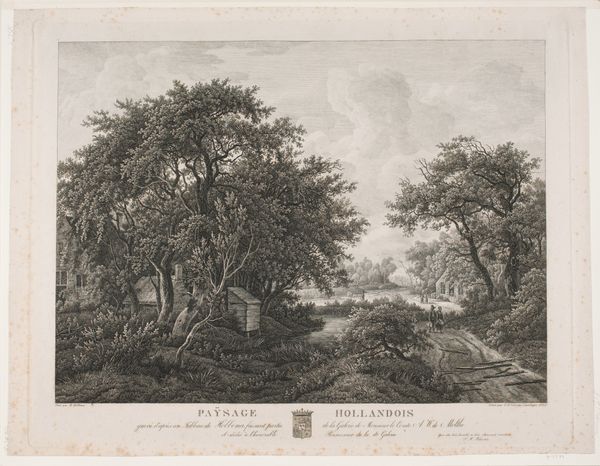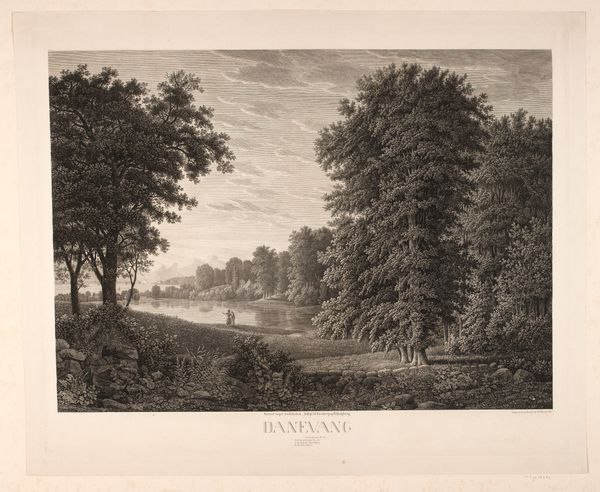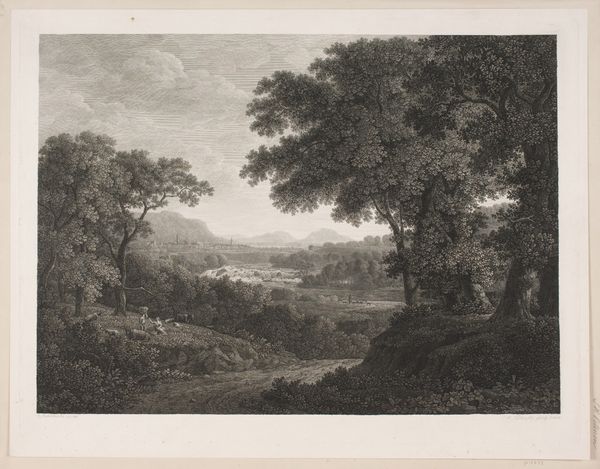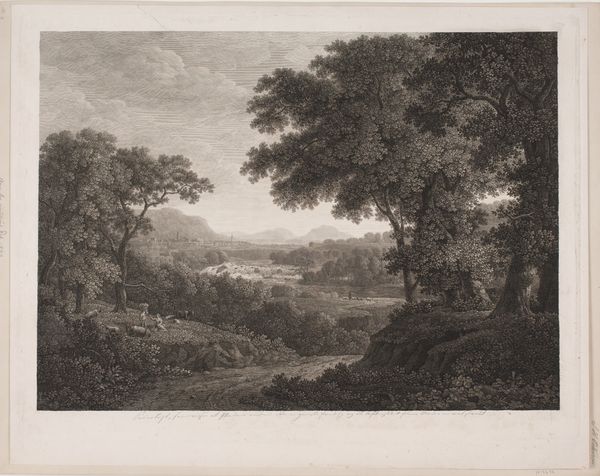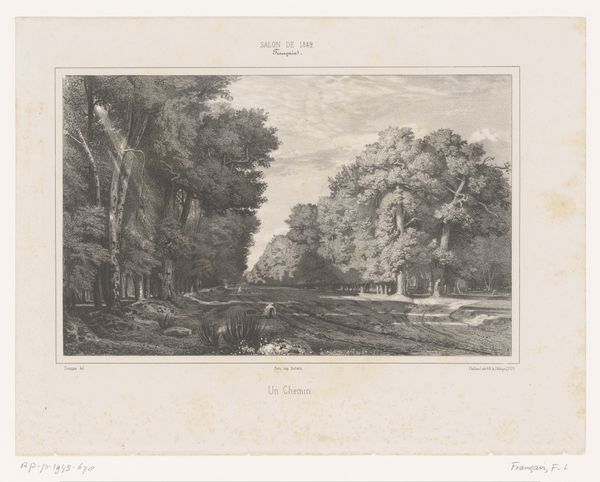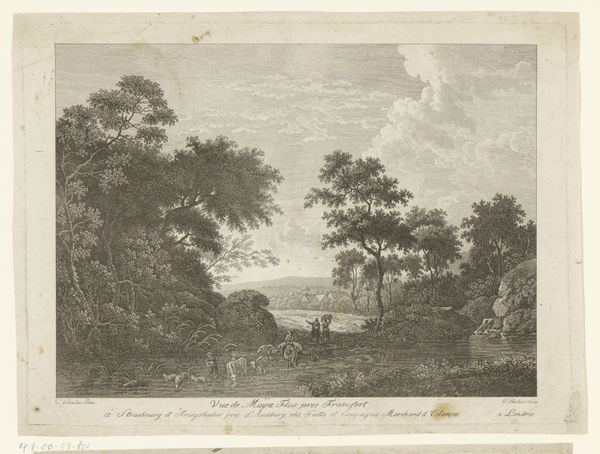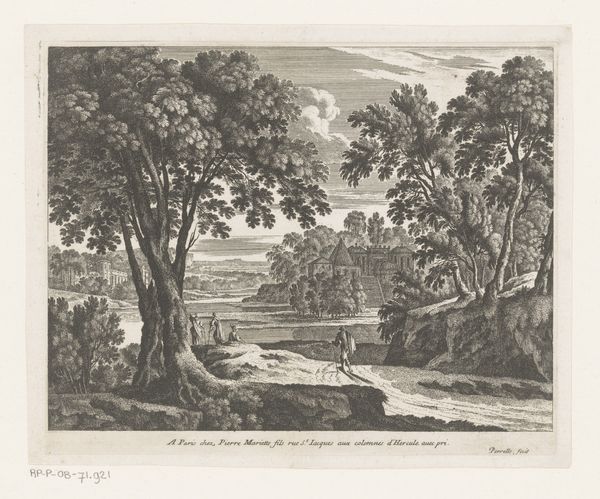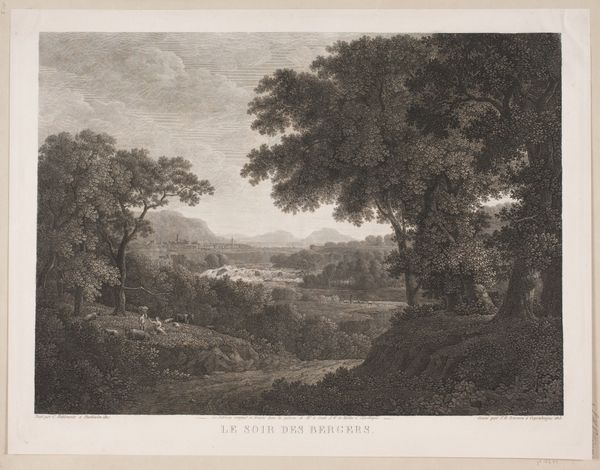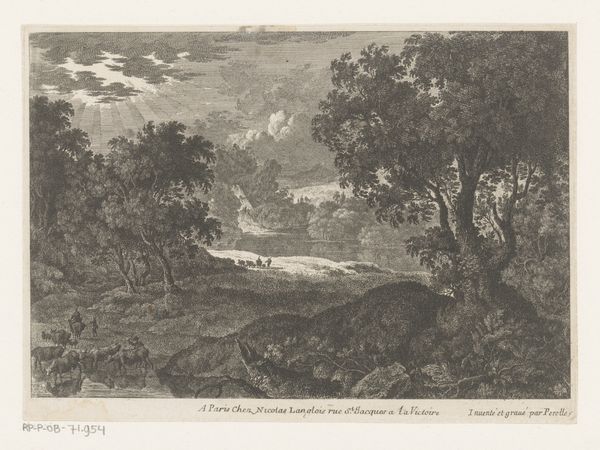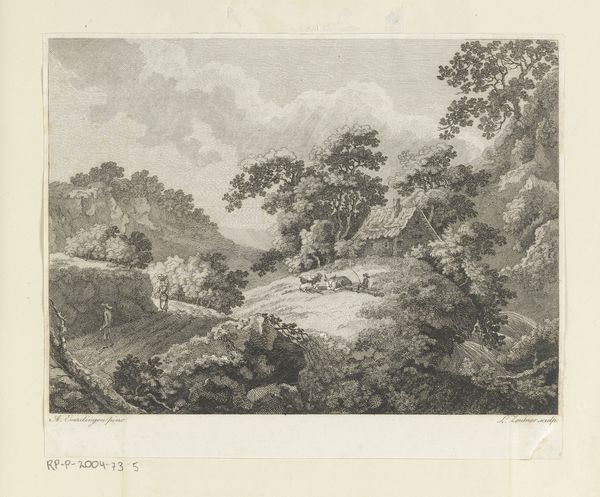
print, engraving
# print
#
landscape
#
etching
#
romanticism
#
engraving
Dimensions: 636 mm (height) x 865 mm (width) (plademaal)
Editor: So this is *Landskab*, a landscape print from sometime in the first half of the 19th century, at the Statens Museum for Kunst. The wall text says it’s an etching and engraving. I’m struck by how meticulously rendered the trees are, but there's something also deeply melancholic about the overall tone. How do you interpret this work? Curator: That melancholy you pick up on is really important. Think about the context: the Romantic era. Nature wasn’t just scenery; it was a site of intense emotional and spiritual experience, particularly for marginalized communities. The engraving depicts an almost sublime forest, yet rendered through a highly ordered and cultivated aesthetic. Can you imagine who had the time, leisure, and access to engage with and represent landscapes this way during the 1800s? Editor: Aristocrats and the wealthy merchant class, I suppose? Landowners. Curator: Exactly. So, how does knowing that frame your understanding of a “natural” scene like this? What perspectives might be missing from this picture? Editor: Well, thinking about the under-representation of working-class lives in art from this period… it almost feels like this print is subtly erasing their labour in shaping the land, even disguising their exploitation. The image suggests peace and tranquility, but maybe that was only for some. Curator: Precisely. And if this landscape ideal became culturally dominant, how might that impact ideas of national identity, ownership, and belonging, especially for those excluded from it? Editor: That makes me consider this piece with entirely different eyes. I came in just seeing pretty trees. Curator: Art invites us to continuously renegotiate our understandings, challenge prevailing narratives, and unearth hidden voices. It's rarely just "pretty".
Comments
No comments
Be the first to comment and join the conversation on the ultimate creative platform.
